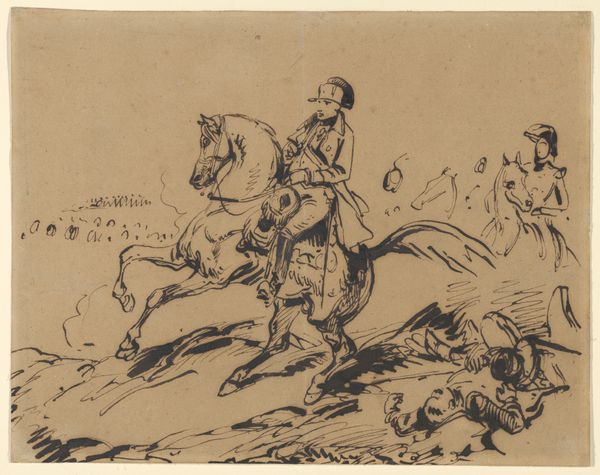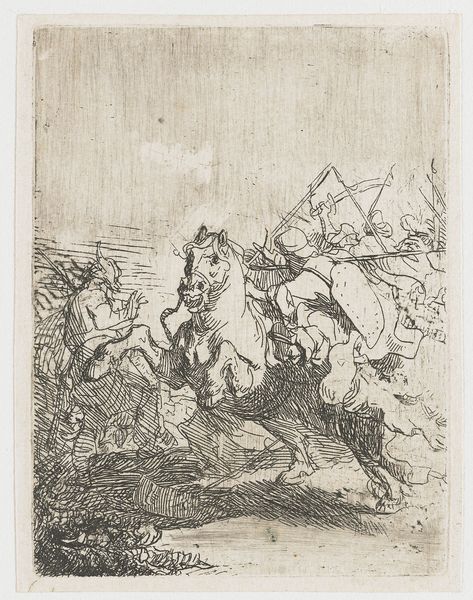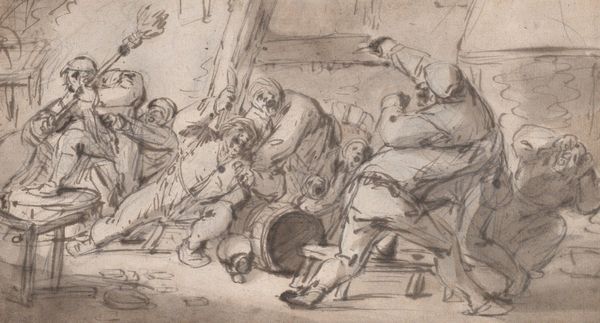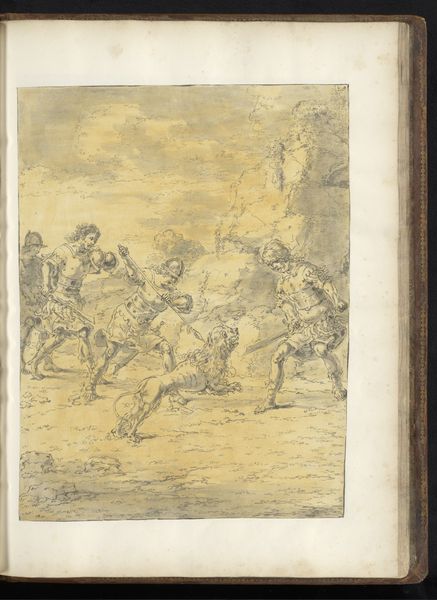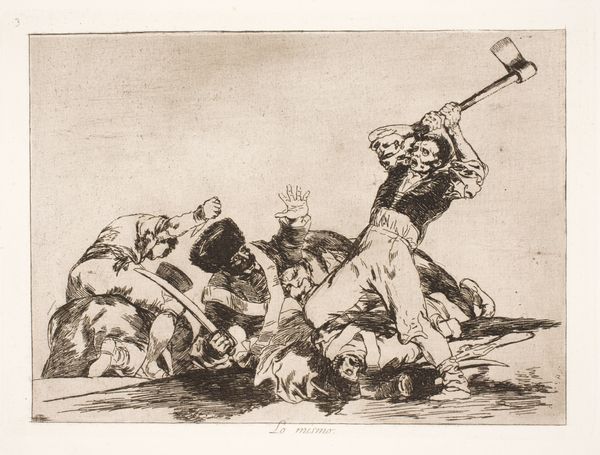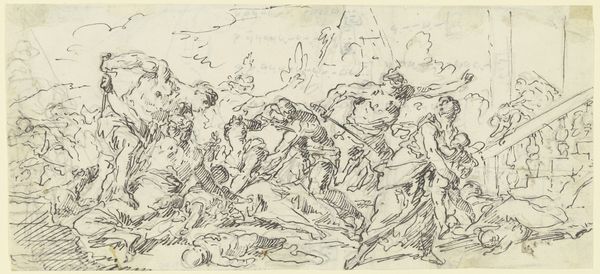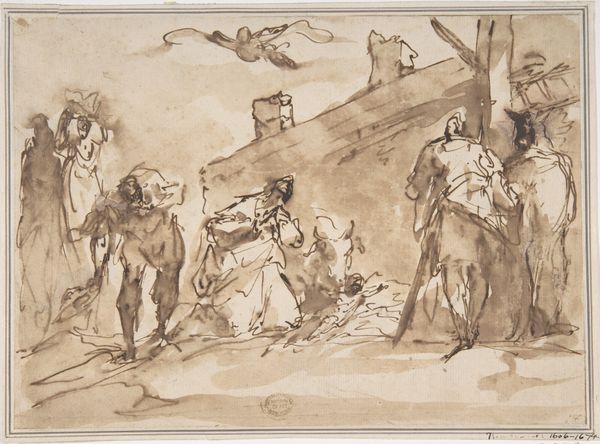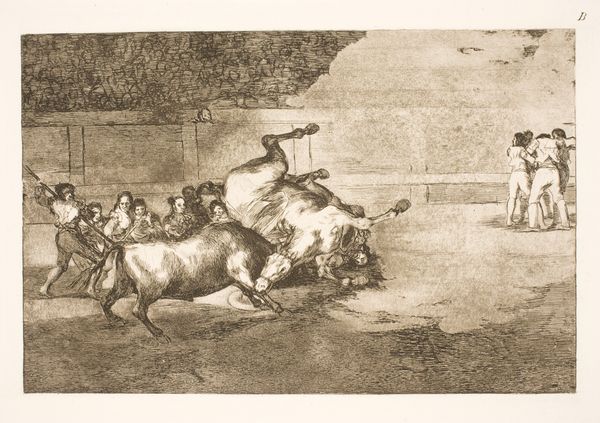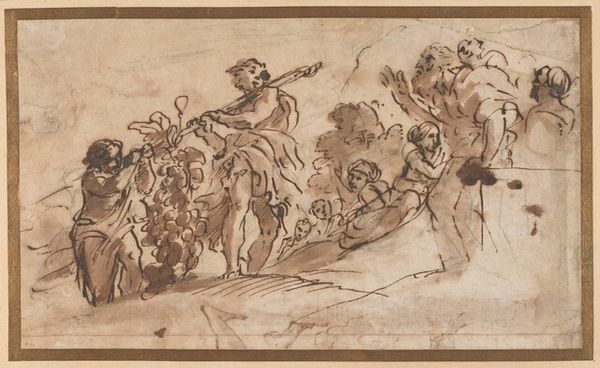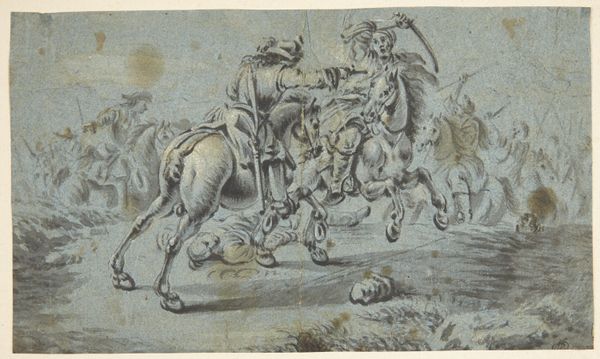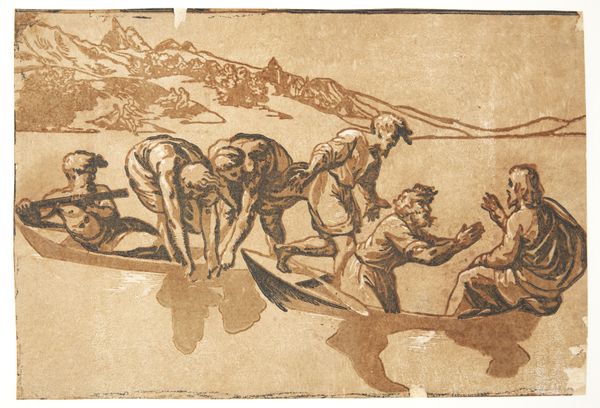
drawing, print, paper, ink, pen
#
drawing
#
narrative-art
# print
#
landscape
#
figuration
#
paper
#
ink
#
romanticism
#
pen
#
history-painting
Dimensions: 140 × 248 mm
Copyright: Public Domain
Curator: This energetic drawing is by James Stuart and is entitled "Cavalry Going Into Battle." Created around 1813, the work is a lively pen, ink and wash on paper print. What is your first impression? Editor: Raw. Definitely raw. It’s visceral, even, despite being relatively small. The composition seems to swirl and buckle, conveying a real sense of chaos and violence. You immediately sense the trauma war inflicts on all levels of society. Curator: I find it interesting that you highlight the theme of trauma when looking at the image’s historical context. Stuart came from a long line of Scottish soldiers; however, his familial connection to the military occurred as Enlightenment philosophies became more widespread. Therefore, he understood war on an individual level but also the collective devastation that conflict caused. Editor: Precisely. And while Stuart may not have explicitly engaged with what we'd call intersectional identities today, we can still interpret the piece through that lens. Whose bodies are deemed disposable in war? Which perspectives are elevated in narratives of conflict? There's an evident sense of frenzied brutality and loss that permeates the entire composition. Even the horse becomes collateral damage of political maneuverings. Curator: It is certainly the artist's intention to convey an overarching point. Although the materiality, being simply pen, ink and wash on paper, might lead a contemporary audience to question its social or political impact, at that time, images of current events held significant value in promoting or subverting governmental bodies. Consider Francisco Goya’s *Disasters of War*, and one sees the rise of more visceral and critical reflections on war as a part of the changing culture during the Enlightenment era. Editor: Absolutely. And this piece contributes to that tradition. There's an immediacy in the rapid linework, a sketch-like quality that lends a sense of urgency. It bypasses idealized depictions of battle and gets straight to the human cost, challenging the viewer to confront the ethics of war itself. Curator: Indeed. It encourages viewers to acknowledge these figures in their complicated realities. Thank you. Editor: Thank you; reflecting on this through its place in history provides ample food for thought.
Comments
No comments
Be the first to comment and join the conversation on the ultimate creative platform.
